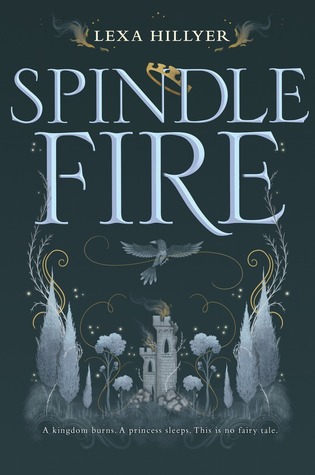 Holly Black, as far as I'm concerned, is the Queen of Faerie, or at least of writing it. Her book Tithe is one of my favorites in the paranormal and urban (or suburban, as Black calls it) fantasy genres. Seeing her return to this world, in a different capacity, was a thrill, and waiting for this book to come in from the library was a form of torture.
Holly Black, as far as I'm concerned, is the Queen of Faerie, or at least of writing it. Her book Tithe is one of my favorites in the paranormal and urban (or suburban, as Black calls it) fantasy genres. Seeing her return to this world, in a different capacity, was a thrill, and waiting for this book to come in from the library was a form of torture.Unlike Tithe and its sequels, which weave in and out of Faerie and the mortal world, The Cruel Prince takes place almost entirely in Faerie, in the High Court which has slowly been subsuming other Courts. The main character is Jude, who saw her parents murdered by the redcap general Madoc when she was seven and spirited away, along with her sisters, to live in Madoc's home and be raised as one of the Faerie Gentry, though Jude is keenly aware that she is not and will never be fae herself.
This is a book of shades of gray. No character here is wholly good or bad. Jude's tangle of emotions form the core of the story, driving her to take risks that plunger her into the center of a dangerous and changing Court. Her desire to be fae and to be better them, her love for Madoc and her hate for him, her longing to be one with her twin sister and to stand on her own, to stand out and to fit in--all of these are a swirl of conflict within her, and they drive her to become a spy and try to untangle the slowly-tightening web surrounding the changing of the High Court's ruler. And while all of that is going on, she's enmeshed in another ongoing conflict, with Cardan, the youngest of the High Court's princes, who hates Jude and leads his merry band of followers on a campaign of all-out war against her, without ever letting her die. And then there's Locke, who presents a reprieve and a dilemma all his own.
I love Black's writing. She writes complicated teenage girls very, very well, and her depictions of Faerie continue to be marvelous. It is beautiful and cruel, lush and dangerous, magical and menacing. All of this is very apparent, and the world that it all contributes to is breathtaking. There are also appearances from several familiar faces, though I found myself scouring my brain for some sign of a few of them--Kaye and Roiben are easy to place, of course, but I couldn't pin down Severin, who I think must be from The Darkest Part of the Forest, which I haven't yet read. But while these familiar characters are a delight to see and important to the plot, Black doesn't let them take over the actual story, and it would have been very easy for that to happen.
The actual plot here isn't hard to puzzle out; all of the pieces are laid out for us, and it's fairly easy to see the conclusion before Jude herself reaches it. Jude isn't stupid, she just allows herself to be blinded by her own desires--something that she herself admits when everything comes undone. But she's also a budding master strategist, and while this one wasn't hard to puzzle out, I'm interested in seeing where her machinations go in the future books of this series. Which we have to two years for. Well, one for the second, but two for the third and final! Aaaargh. Well, at least I'll have The Darkest Part of the Forest to turn to, now, and I think I need to reread the dark and glowing jewel that is Tithe as well.
4.5 stars out of 5.



